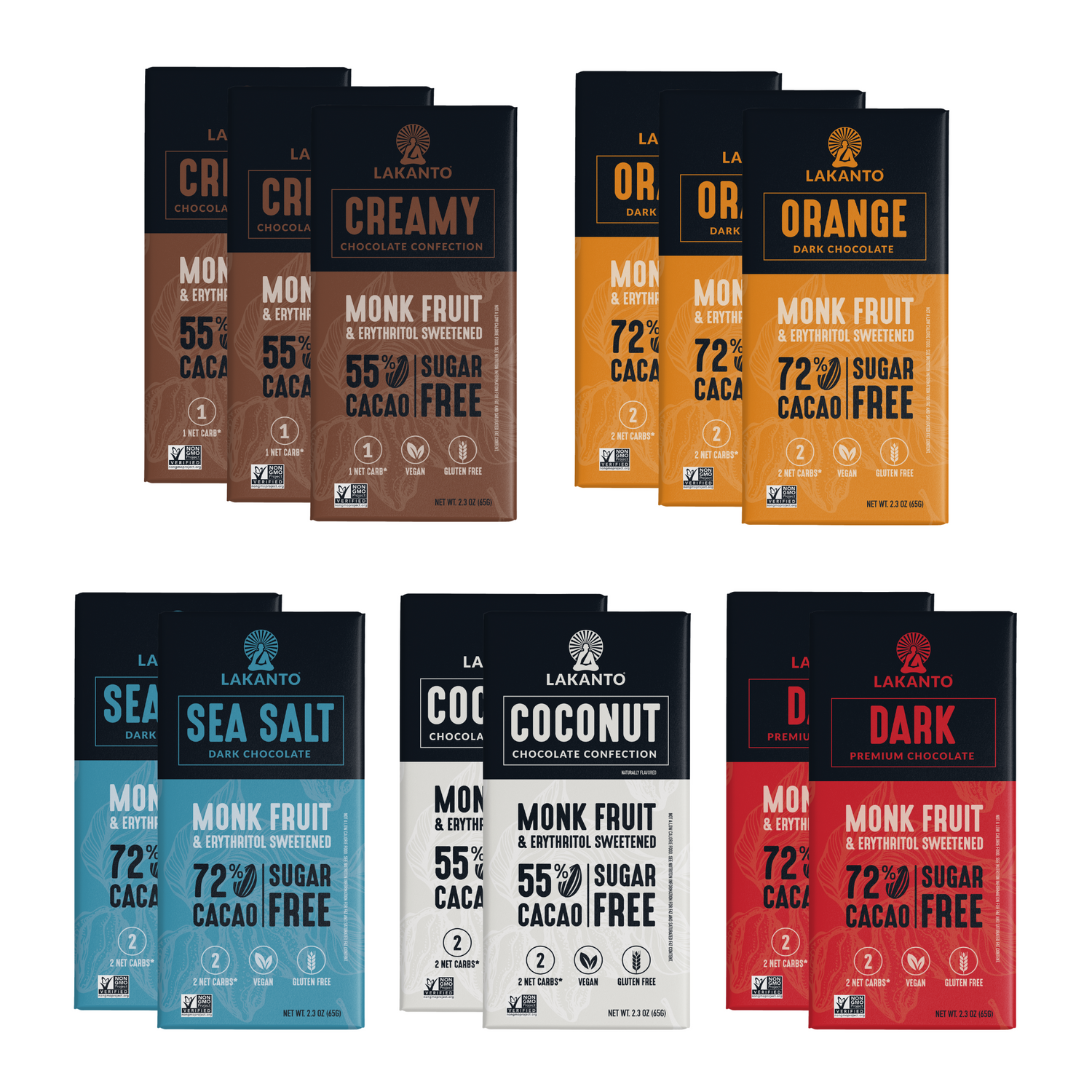November is National Diabetes Month. We're offering practical advice for preventing and managing Type II Diabetes.
When you're living with diabetes, obesity or metabolic syndrome, it’s important keep your blood sugar under control by eating foods that will not cause rapid rises in blood glucose and insulin levels.
Here are five useful tips to help reduce the glycemic load of a any meal. These lifehacks can help you reduce your body's blood sugar response and minimize the impact of sugar!
But first...
What is a "glycemic index," anyway?
Glycemic Index is a 100-point scale that ranks digested carbohydrates by how much they raise blood sugar levels. Pure sugar (glucose) ranks 100. Foods with a high glycemic index of 70+ get digested quickly and cause a rapid spike in blood sugar levels.
Glycemic Load is a little more complicated and is useful for deciding on portion sizes. It tells you how much blood sugar levels will rise after eating a specific amount of a food.
The equation for calculating glycemic load is carbohydrate (grams/serving) x glycemic index, divided by 100. GL = (carbs x GI) / 100
For example, a small apple contains 13 grams of sugar, has a glycemic index of 38, and a glycemic load of 5. A glycemic load of 10 or less is low, 11 to 19 is medium, 20 or more is high.
More about the Low Glycemic Diet
1. Slow Down - Chew More!
This one first because it's the simplest and most often overlooked. Your body reacts to not only WHAT you eat but HOW you eat.
The speed at which food enters your stomach and the state in which it arrives both have major effects on glycemic response. When you eat slowly and mindfully, allowing only thoroughly-chewed and saliva-saturated food to enter your stomach, you will have an easier lower blood sugar response that if you quickly wolf it down.
Thorough chewing is one of the easiest ways to improve your digestion. Digestion starts in the mouth as the teeth and saliva break the food down into smaller and easier-to-digest pieces. Saliva contains contains a powerful starch-digesting enzyme called ptaylin, so it is especially important to thoroughly chew carbohydrates.
Slow eating can simultaneously be the easiest AND most difficult tip to implement, and it always has positive results.
2. Add fibre
This is especially effective when consuming sugar-rich foods. These foods are of course not recommended for people with insulin resistance-related conditions like diabetes or obesity, but let’s face it, sometimes we end up eating them anyway. So what to do? Simple: add fibre. Fiber slows the absorption of sugar into the bloodstream from our gut, lowering the glycemic index of carbs.
Ground flax seeds, chia seeds, bran and glucomannan all work great. Apparently, it is best to get these added fibre products in before your meal with some water, but you can take it with the meal too.
3. Add Cinnamon
Taking just 1.5 teaspoons of ground cinnamon with a meal can cut the glycemic load by nearly 30%. Wow!
Freshly-ground true cinnamon is most effective. Make sure you know what you’re buying – most of what is sold as cinnamon is in fact a related plant called cassia. It’s easy to tell the difference – cassia is reddish brown and has thick bark while true cinnamon is soft, with light brown, thin bark. Throw some organic fair trade true cinnamon quills into a spice or coffee grinder and sprinkle it for easy glycemic reduction.
4. Try Apple Cider Vinegar
Taking a small amount of unpasteurized apple cider vinegar can also reduce the glycemic load of carbohydrate foods. Take 2 tablespoons of apple cider vinegar mixed with some water. A word of caution – prolonged use of apple cider vinegar can damage the enamel on your teeth, so use this tip sparingly.
5. LAKANTO Healthy Sugar Replacement
Occasionally we all want to eat something sweet, but why should our health suffer? LAKANTO allows you enjoy sweet foods and drinks while adding zero to the glycemic load. Use it in superfood smoothies, baked goods, homemade chocolate, coffee and tea and as a dip for sour fruits. We shouldn’t let insulin resistance hold us from enjoying la docle vita - the sweet life! LAKANTO makes it easy.It's Time to #SweetResponsibly
Eliminate sugar and artificial sweeteners from your diet and replace it all with the Immortals' Fruit: monk fruit. With its true-to-sugar sweetness, the ultimate sugar-substitute is just a click away. Check out our all-natural, sugar-free, lifestyle friendly products!>>Click Here!



